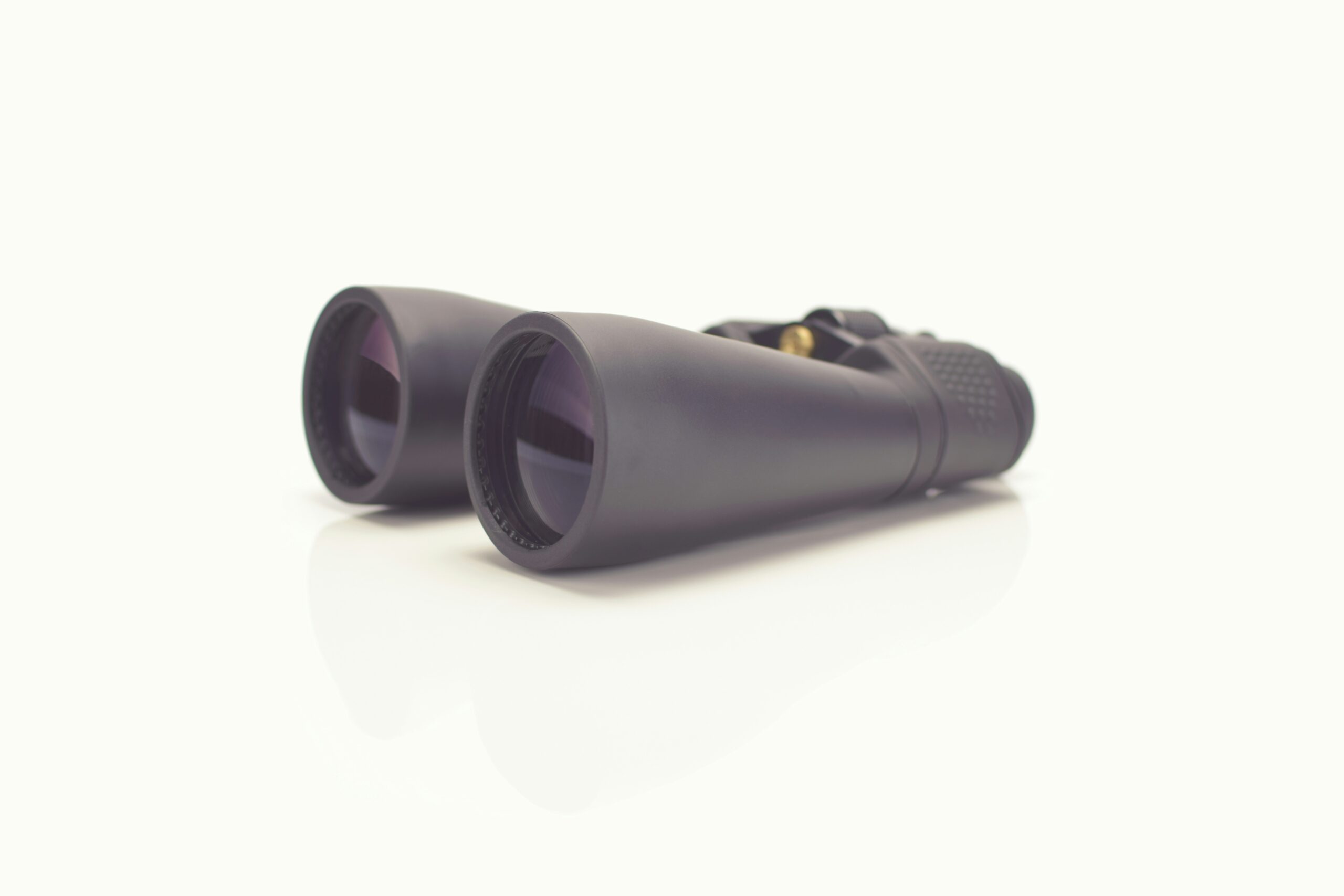What is the difference between prisms in binoculars? If you’re an enthusiast of the great outdoors, birdwatching, stargazing, or simply love experiencing the world through a pair of binoculars, you might have come across terms like “Roof Prisms” and “Porro Prisms.” At first glance, these terms may sound technical or confusing, but understanding them helps in choosing the right set of binoculars for your specific needs.
Understanding the Role of Prisms in Binoculars
When you use binoculars, light enters through the objective lenses, travels through a series of prisms, and finally reaches your eyes through the eyepiece. Prisms play a critical role in this process. They invert and revert the image to ensure that what you see is right-side up and correctly oriented.
Why Do We Need Prisms?
The objective lenses in binoculars capture an image upside down and backwards. Without prisms, the final image would appear this way to you, rendering any binoculars pretty much useless. Prisms correct this orientation, enabling a proper view of the scene.
Types of Prisms in Binoculars
Binoculars primarily use two types of prisms:
- Roof Prisms
- Porro Prisms
Understanding the differences between these can help you make an informed decision.
Roof Prisms
Roof prisms are named because the light path resembles the shape of a roof. This type of prism design is generally more complex and compact. They are popular among those who desire sleek, durable binoculars.
Advantages of Roof Prisms
- Compact Design: Roof prism binoculars can be more streamlined and compact.
- Durable Build: The straight-line design makes them less prone to misalignment.
- Weather-Resistant: Many roof prism binoculars offer better sealing and resistance to water and dust.
Disadvantages of Roof Prisms
- High Cost: Because of the more complex manufacturing process, roof prism binoculars can be pricey.
- More Sensitive to Misalignment: Careful handling is essential to maintain their optical precision.
- Slightly Lower Light Transmission: Though modern coatings have mitigated this, they traditionally allow less light transmission than Porro prisms.
Porro Prisms
Porro prisms, named after Italian inventor Ignazio Porro, have a simpler, more traditional design. The light path creates a zigzag pattern, which gives these binoculars their classic appearance.
Advantages of Porro Prisms
- Better Depth Perception: Due to the wider objective lenses, they often offer better depth perception.
- Higher Light Transmission: Generally, Porro prisms can transmit more light compared to roof prisms.
- Affordable: Easier and cheaper to manufacture, making them more budget-friendly.
Disadvantages of Porro Prisms
- Bulky Design: These tend to be larger and bulkier.
- Less Durable: More external moving parts make them more susceptible to misalignment.
- Less Weather-Resistant: Traditionally not as sealed against the elements as roof prism binoculars.

Comparing Roof and Porro Prisms
Here’s a quick comparison to help you understand the differences better:
| Feature | Roof Prisms | Porro Prisms |
|---|---|---|
| Design | Compact and straight | Bulky with a zigzag light path |
| Durability | More durable | Less durable |
| Depth Perception | Lower | Higher |
| Light Transmission | Slightly lower | Higher |
| Cost | Higher | More budget-friendly |
| Weather Resistance | Generally more weather-resistant | Less so |
Optical Coatings
No discussion about binoculars would be complete without talking about optical coatings. Both roof and Porro prism binoculars can benefit from special coatings that enhance performance.
Types of Coatings
- Single-Coating: Basic level of coating applied to at least one lens surface.
- Fully-Coated: Every air-to-glass surface has a single layer of coating.
- Multi-Coated: One or more surfaces have multiple layers of coatings for enhanced light transmission.
- Fully Multi-Coated: Every air-to-glass surface has multiple layers of coatings.
Each type of coating has its own set of benefits, improving brightness, contrast, and color fidelity.

When to Choose Roof Prisms
So, when might you opt for roof prisms?
If You Need Compact, Durable Binoculars
Roof prism binoculars are perfect for rugged outdoor activities like hiking and camping. Their compact and durable design makes them easier to carry and handle in diverse weather conditions.
If You’re Willing to Invest
Given their higher cost, you might prefer roof prisms if you are a serious hobbyist or professional who can invest in quality optics.
When to Choose Porro Prisms
Alternatively, when should you go for Porro prisms?
If You Want Enhanced Depth Perception and Light Transmission
Porro prism binoculars excel in situations where depth perception and light transmission are crucial, such as birdwatching during dawn or dusk or stargazing.
If Budget is a Concern
Their simpler and more cost-effective design makes them a go-to choice for beginners or those on a budget.

Special Features to Consider
Modern binoculars come with various features that can help enhance your experience, regardless of the prism type.
Image Stabilization
Some binoculars feature image stabilization technology, which helps keep the image steady. This is especially useful for high-magnification binoculars where even minor hand movements can distort the image.
Waterproof and Fog-Proof
Outdoor enthusiasts may find waterproof and fog-proof binoculars especially useful. These binoculars are sealed and often filled with inert gases like nitrogen or argon to prevent internal fogging.
Close Focus Capability
For activities like butterfly watching or viewing close-up details in a museum, a pair of binoculars with a short minimum focusing distance can be advantageous.
Choosing the Right Magnification
When choosing binoculars, the magnification is another important factor to consider. Whether you choose roof or Porro prisms, the magnification and objective lens size (e.g., 10×42) are crucial.
Understanding Magnification Numbers
Magnification is represented by the first number (e.g., 10x), which signifies how many times closer an object appears than to the naked eye. The second number represents the diameter of the objective lens in millimeters.
What’s Ideal?
8x to 10x magnification is generally suitable for most outdoor activities. For astronomy, you might prefer higher magnifications like 15x, though you’d need a tripod for stability.
Exit Pupil and Eye Relief
These are two more factors that can significantly impact your comfort and viewing experience.
Exit Pupil
The exit pupil size, calculated by dividing the objective lens diameter by the magnification, affects how bright the image appears. A larger exit pupil is better for low light conditions.
Eye Relief
Eye relief is the distance between your eye and the binocular eyepiece, which can affect comfort, especially for eyeglass wearers. Look for at least 15mm of eye relief if you wear glasses.
Field of View
The field of view, measured in feet at a thousand yards or in degrees, indicates how wide an area you can see through the binoculars. A wider field of view is beneficial for tracking moving objects.
Practical Advice on Trying Before Buying
Whenever possible, it’s a good idea to try binoculars before purchasing. Check local outdoor, sports equipment shops, or birdwatching clubs that might offer demos.
What to Test
- Alignment: Ensure the images from both eyes merge into one.
- Focus: Check the ease and sharpness of the focusing mechanism.
- Weight & Comfort: Hold the binoculars to get a feel for their weight and balance.
Practical Scenarios
Birdwatching
For birdwatching, you might find 8×42 or 10×42 binoculars ideal. Porro prisms offer excellent depth of field and brightness, while roof prisms offer durability and ease of handling.
Stargazing
For stargazing, consider higher magnifications like 15x or 20x, often found in Porro prism binoculars. Ensure you use a tripod for stable viewing.
Sports Events
For sports events, roof prism binoculars with 8x or 10x magnification are portable and offer a good field of view to track fast-moving action.
Care and Maintenance
Regardless of prism type, proper care and maintenance can extend the life of your binoculars.
Cleaning Lenses
Use a soft brush to remove dust and a microfiber cloth for smudges. Avoid using household glass cleaners.
Storage
Store in a dry, cool place, preferably in a protective case. Avoid leaving them in extreme temperatures, which could affect the internal components.
Regular Checks
Periodically check for alignment and ensure all moving parts work smoothly. If something feels off, professional servicing might be necessary.
Final Thoughts
Understanding the differences between roof and Porro prisms can go a long way in helping you choose the right binoculars for you. Both types offer unique benefits and cater to different needs and activities. Your budget, usage frequency, and specific requirements should guide you in making the best choice.
So next time you’re in the market for binoculars, you’ll not only know what the difference between the prisms in binoculars is but also make an informed decision that enhances your viewing experience.
